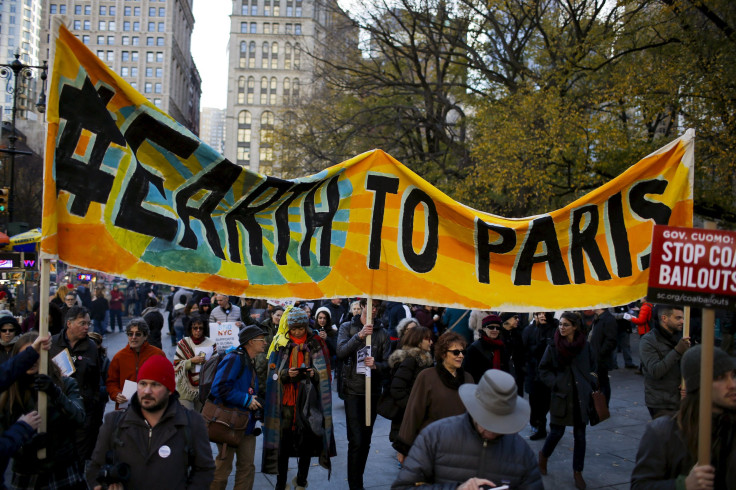Trump Announces US Withdrawal From Paris Climate Agreement, But What Is The Process For It?

In a speech laden with nationalistic rhetoric and liberally sprinkled with the words “tremendous” and “big,” President Donald Trump announced Thursday afternoon his decision to pull the United States out of the Paris Climate Agreement, citing its “unfair” provisions that hobble the economic growth of the country.
In his announcement, Trump said the U.S. would cease implementing all the non-binding accords of the agreement immediately, but the process of a complete withdrawal from the agreement is a much longer process.
Read: Elon Musk, Leonardo DiCaprio Stand By Paris Climate Agreement
According to the rules set out in the United Nations Framework Convention on Climate Change (UNFCCC), signatories to the agreement can choose to withdraw from it “at any time after three years from the date on which” the agreement went into force for the country. For doing so, the withdrawing member — in this case, the U.S. — has to give a written notification, and the withdrawal will come into effect one year after the notification, at the earliest.
The UNFCCC also maintains a list of when each of the Paris Climate Agreement signatories signed up to the agreement, when they ratified it and when it went into force for each of them. And that list shows the agreement went into force for the U.S. on Nov. 4, 2016, just days before Trump won the election.
That would mean the earliest the United States can invoke the withdrawal clause is November 2019, and the earliest it can effectively withdraw from the agreement is November 2020. By that time, the political climate in the country could have changed, and the U.S. could make a U-turn once again on its environmental commitments, a reversal that will be of great benefit to both the country and the rest of the world.
In his speech, Trump also said he was willing to renegotiate the terms of the Paris agreement, as a condition for the U.S. to continue its participation in it. However, in a statement following Trump’s speech, UNFCCC made it clear that an agreement signed by 194 other countries and ratified by 147 of them cannot be renegotiated on basis of a single country’s request, even if that one country happens to be the world’s second-largest polluter.
Despite whatever Trump might say (including his attempt to portray climate change as a Chinese hoax), the U.S. can hardly shrug off its responsibility to mitigate the effects of climate change. And Trump’s actions don’t sit well with his words, like calling himself “someone who cares deeply for the environment” while also labeling himself someone who supports the mining of coal.
Read: What Do Energy Companies Think Of The Paris Climate Agreement?
Under the Nationally Determined Contribution, now thrown to the winds by Trump, the U.S. is intended to reduce its greenhouse gas emissions by 26-28 percent from 2005 levels, by 2025. According to Trump, doing so would amount to “onerous energy restrictions placed on the United States” and cost the country 2.7 million lost jobs by 2025.
Effective immediately, the U.S. will also stop lifting the “draconian financial and economic burdens” imposed by the agreement, such as contributing to the Green Climate Fund, though Trump failed to specify how much the U.S. spends on it, saying only that it cost the country “a vast fortune.”
The climate fund was established by almost 200 countries to invest in low-emission technologies and to help developing countries and vulnerable communities impacted by climate change.
Unconventional as he might be, Trump will follow the protocol to withdraw from the Paris agreement, the New York Times reported.
© Copyright IBTimes 2025. All rights reserved.





















